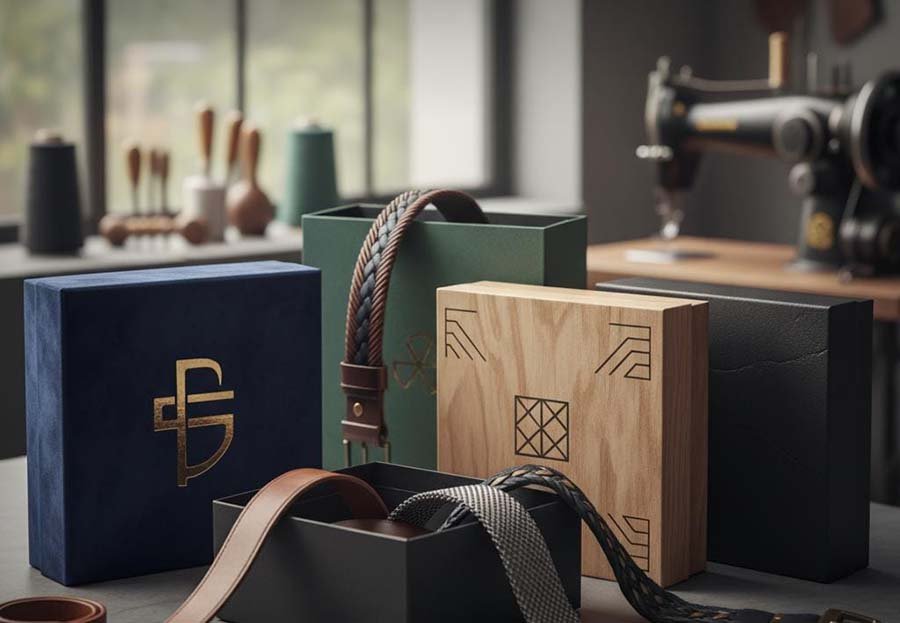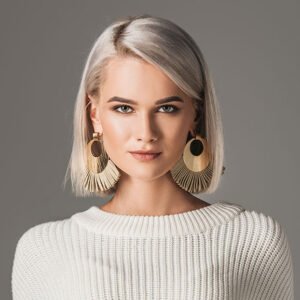
When you think of belts, you probably picture fashion, leather, buckles. But behind the scenes, there’s a subtle but powerful tool in the world of retail and branding: belt boxes — especially custom belt boxes.
These aren’t just containers. They’re part of the first physical handshake your customer has with your product. A well-designed belt box can:
- Protect the belt during shipping and storage
- Elevate perceived value
- Serve as a brand touchpoint (logo, colors, embossing)
- Help with presentation and unboxing experience
In short: it’s packaging plus branding plus protection.
Let’s dive into how to make your belt boxes stand out — and why custom is the path forward.
The Belt Box Market: Trends & Numbers
Understanding the landscape helps you see opportunity.
- The global belt packaging boxmarket is projected to hit $1.8 billion by 2028, growing ~5.2% annually.
- Premium belt boxesincreasingly use magnetic closures, matte finishes, embossing, and eco-materials to appeal to discerning customers.
- Many brands are embracing sustainability. Some belt boxesare now offered in compostable or recyclable materials.
- On the packaging sustainability front, the global push to reduce waste is pressing. Over 80 million tons of packaging wasteare generated annually in the EU alone.
So, custom belt boxes are not just an aesthetic choice — they’re a strategic one in a market that increasingly values brand stories, premium experiences, and sustainability.
What Makes a Great Custom Belt Box
Let’s break down the features, specs, and design elements you should consider.
| Feature | Why It Matters | Practical Tip |
|---|---|---|
| Material & thickness | Determines durability, tactile feel, and protection | Use rigid cardboard / chipboard (e.g. 1.5–2 mm) for premium feel |
| Type of closure / opening | Convenience, elegance, unboxing drama | Magnetic flap, drawer-style slide, tuck-top, or hinge lids |
| Inner insert / base | Keeps the belt neatly in place | Use foam, molded trays, elastic straps, or stitched slots |
| Printing & finishing | Branding, aesthetics, texture | Matte, gloss, embossing, foil stamping, spot UV |
| Custom size & shape | Avoid wasted space; ensure snug fit | Tailor dimensions to your belt’s length, width, and buckle |
| Sustainability / eco options | Environment appeals to mindful consumers | Use recycled paper, FSC-certified stock, compostable materials |
One design innovation lately: color-pop “double bag” style boxes that combine box + handle, offering visual impact and function.
Customization: Your Brand’s Signature
Why go custom instead of off-the-shelf? Because customization lets your brand voice shine.
- Logo & branding placement: Your color palette, brand symbol, slogan — all can become part of the unboxing moment.
- Unique structure / shape: Perhaps your belt is ultra-wide; you might want a curved box, or a telescoping slide.
- Limited editions: For special launches or seasonal collections, you can make limited custom runs that feel exclusive.
- Smart packaging tech: Though still niche, embedding NFC chips or QR codes (for authentication, storytelling) can elevate perception.
How to Design & Order Your Custom Belt Boxes
Here’s a step-by-step guide to turn ideas into reality:
- Measure your belt & hardware
Measure full length (rolled up or flat), width, buckle height. Leave clearance space. - Select box style & structure
Drawer style? Flip-top? Hinge? Drawer slides are elegant, tuck-top is cost effective. - Choose material & inner fixtures
Choose board thickness, lining (e.g. paper, velvet), inserts to hold the belt. - Design artwork / branding
Work with a designer to create dielines, logo placement, finishes (foil, emboss, etc.). - Request a proof or sample
Always request a mockup or sample box to verify fit, print quality, and structure. - Order quantity
Watch for minimum order quantities (MOQs); some providers like My Box Printer have low or no minimums. - Check logistics, shipping, assembly
Some boxes ship flat and need folding; plan assembly time. Also check shipping costs because box dimensions affect freight.
A useful academic insight: in e-commerce, optimizing box dimensions reduces wasted air space and shipping cost. One decision-tree framework for box sizing reduced unused volume by 4–10%.
Balancing Cost vs Wow Factor
Yes, custom belt boxes cost more than generic ones. But consider that the packaging is also part of your marketing spend.
Key cost factors:
- Material & board thickness
- Printing complexity (full color, special inks, foiling)
- Inserts & padding
- Structural complexity (e.g. magnets, hinges)
- Quantity (higher runs lower cost)
- Shipping & dimensional weight
You should calculate cost per box including shipping and compare with your margin. Often, you’ll find that the premium perceived value offsets a bit more cost.
To stretch your budget, you can:
- Use a simpler box structure but better finishing
- Use digital printing for smaller runs
- Reserve premium options (e.g. foil) for special editions
- Negotiate for bulk discounts
Sustainability: A Must for Modern Packaging
In today’s world, eco-friendly packaging isn’t a “nice to have” — for many customers, it’s expected.
- Many belt boxproviders now offer compostable, recyclable, or FSC-certified options.
- The global packaging landscape is pushing toward reducing waste. In the EU alone, packaging waste totals tens of millions of tons annually.
- Major logistics firms like DHLhave their own packaging reduction programs — they’ve removed over 180,000 tons of packaging waste since 2008.
By choosing sustainable materials and efficient box designs (i.e., minimal empty space), you do your part — and gain marketing leverage (e.g., “eco-conscious packaging”).
Case Study: How a Belt Brand Used Box Design to Boost Sales
(Note: fictionalized composite inspired by real practices)
“Leather Luxe Co.” sells premium hand-stitched belts. Their old packaging was a simple polybag with a sticker — fine, but forgettable.
They switched to a custom rigid drawer-style belt box:
Lorem ipsum dolor sit amet, consectetur adipiscing elit. Ut elit tellus, luctus nec ullamcorper mattis, pulvinar dapibus leo.
- Sturdy 2 mm board
- Soft touch black matte finish
- Foil-stamped logo on lid
- Foam insert with cutout to hold belt flat
- Magnetic closure flap
They ran a small A/B test: for one month, half the sales shipped in the new box, half stayed in polybags. The boxed version had:
- 12% increase in repeat orders
- 8% increase in average order value (because the perceived gift quality made customers buy add-ons)
- Numerous social media shares — customers posted unboxing photos and tagged the brand
The investment in packaging paid off in both sales and brand perception.
Tips & Creative Ideas to Make Your Belt Boxes Pop
- Window cutouts
Let customers see the buckle or belt surface without opening. - Texture & tactile finishes
Soft-touch coatings, linen textures, embossing — allow customers to “feel premium.” - Color contrast interiors
A dark box with a bright interior adds drama when opened. - Storytelling panels
Use inner flaps to tell your brand story, craftsmanship notes, or care instructions. - Modular / giftable packaging
Design boxes that open flat or can be reused as belt organizers or storage. - Limited edition packaging
Seasonal special boxes with unique prints or finishes. - Bundle options
If you sell sets (belt + wallet), design a box that fits both elegantly.
Conclusion: Belt Boxes Are More Than Just Boxes
Custom belt boxes and belt boxes may sound niche or minor — but they carry outsized influence in brand perception, unboxing delight, and physical protection. In a market where presentation matters, your packaging is part of the product.
By combining smart design, material selection, branding, and sustainable thinking, your belt boxes can:
- Reinforce your brand story
- Encourage customer sharing (unboxing)
- Boost perceived value
- Protect your product
- Help reduce waste
FAQs (Frequently Asked Questions)
Do I really need custom belt boxes, or will plain ones do?
Plain boxes cut cost, but they don’t reinforce your brand. If your belt is a commodity, plain might work. But if you’re building a brand or targeting fashion/connoisseur customers, custom belt boxes pay off.
What’s the minimum order I must place?
It depends on the vendor. Some, like My Box Printer, offer no minimum or very low MOQs. Others require thousands. Always check upfront.
Can I get eco / sustainable custom belt boxes?
Absolutely. Many providers offer recycled, compostable, or FSC-certified stocks and encourage sustainable designs.
How do I ensure the belt doesn’t move inside the box?
Use inserts (foams, molded trays or straps), or design the interior so the belt fits snugly. Some brands use elastic bands or custom cutouts.
Would embedding tech like NFC ruin the aesthetics?
Not necessarily. In premium segments, subtle NFC tags or QR codes can unlock authenticity checks or digital storytelling — a differentiator, not a drawback.


